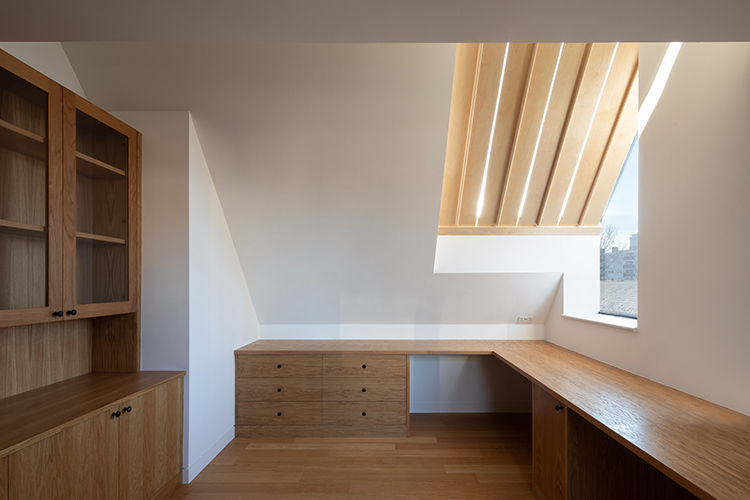
Commenced
Completed
2013
2024
Thames House
TEAM
Architects: A-Zero Architects
Giles Bruce, Phillip Toyin, Mizue Katayama, Shoichi Sado, Maria Despina Stasi, Nicolas Tome
Structural Design: TALL Engineers / Entuitive Engineers
Contractor: Blero Construction ltd / BBC Construction
Photographs: Agnese Sanvito
London, UK
Adjacent to the Thames, this new build development is designed to capture specific views to London. The building is conceived as two parts, a lower brick base built from bricks harvested from the original building which sat on the site, and an upper cantilevered volume, which mediates between the scales of the adjacent buildings. The project references its context in form, but is distinct in the materiality of fibre cement tiles, flush glazing and integrated photovoltaic panels.
The site is sandwiched between low rising housing to the south, and a mock Tudor pub to the west. A detached dwelling that had existed on the site since the early 1900s had been completely overshadowed by a new development to the north. We questioned how a new development could get a view the view to the Thames, the Shard and the City, all obscured by the surrounding buildings. We hired a cherry picker to understand where the views were, and thee orientation a building would need to be to capture them.
Building integrated renewables
This project innovates around integration of renewables. The chamfering of the upper volume provided the optimal inclination and orientation for the integration of photovoltaics with the maximum available solar radiation incident on its surface. The size of the PV panels became the module around which the entire superstructure was organised – with rainscreen panels, rooflights, and PVs all aligned to this common grid. The PVs are estimated to generate 32.4 kWh/m2/annum, or around 31% of the Total Delivered Energy required.

Overheating
The south facing elevation, though optimal for PVs, posed a problem for overheating during the summer months. This can be generally addressed through natural ventilation, but a more robust solution was required to prepare for times when the occupants would leave - on work trips or long summer holidays. A series of timber louvres reflective to the outside were designed. The louvres can be installed and removed as required according to the season.

A-Zero Architects - Copyright © 2025

























